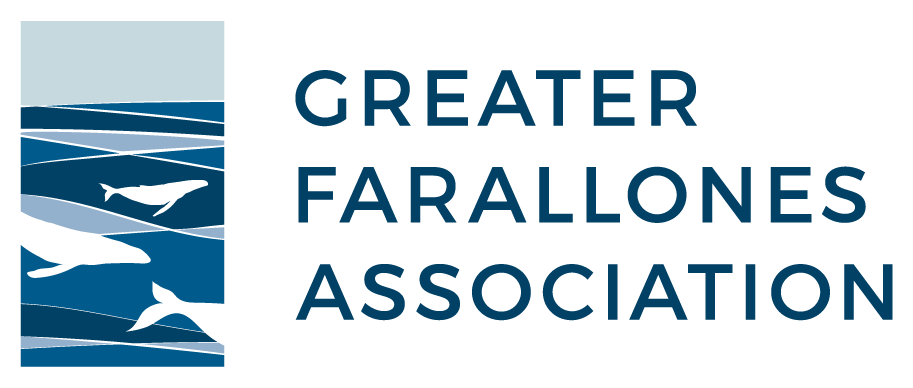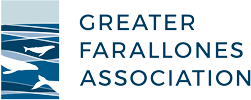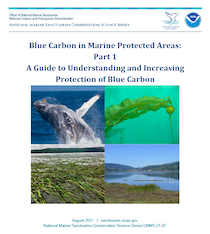Though blue carbon is a rapidly growing area of research, guidance for how to apply blue carbon information in MPA management is lacking, and for some sequestration processes, completely absent. Led by Sanctuary and supported by the Association, this review is Part 1 of a series to inform and guide MPA managers in the assessment, protection, and management of blue carbon habitats and processes. It includes a review of blue carbon potential in MPAs, the role MPAs play in protecting and restoring blue carbon, potential future funding mechanisms to support blue carbon management, guiding principles for advancing blue carbon inclusion in MPA management, and a path forward for national marine sanctuaries. Guiding principles include:
-
- Ecosystem-based management is blue carbon management.
- With small initial investments, MPA managers can vastly increase their knowledge of blue carbon at their site.
- Blue carbon should be incorporated into marine spatial planning and considered in MPA designation and management.
- Managers should understand how to leverage blue carbon to finance MPAs.
- Certain management actions produce greater sequestration gains.
- Blue carbon management is not just coastal.
- Climate policies must include blue carbon.
Part 2: A Blue Carbon Assessment of Greater Farallones National Marine Sanctuary
To assist ONMS in implementing the above principles, “Blue Carbon in Marine Protected Areas, Part 2: A Blue Carbon Assessment of Greater Farallones National Marine Sanctuary” provides an assessment of select blue carbon habitats and processes in the Sanctuary, and can serve as a model assessment for other sites in the National Marine Sanctuary System. As sites assess blue carbon sequestration potential, these assessments can build upon the body of knowledge in this series. The reports can serve as a preliminary step in ensuring that national marine sanctuary management protects and enhances the critical climate mitigation services of its coastal and ocean resources.
Coastal and marine ecosystems play a significant role in the global carbon cycle, sequestering and storing carbon over long timescales. These “blue carbon” ecosystems help mitigate climate change and its impacts by facilitating the uptake of atmospheric carbon dioxide (CO2) into the ocean and transporting carbon into sediments or deep waters where it can remain indefinitely if undisturbed. Inclusion of these coastal and ocean processes as part of the solution to global climate change is essential in achieving global carbon mitigation and emission reduction goals; however, blue carbon is often overlooked in climate mitigation policies. Further, resource managers of the largest network of U.S. marine protected areas (MPAs), the Office of National Marine Sanctuaries, have not incorporated assessments of blue carbon extent and functionality into their management plans, policies, or decisions, which can result in unintentional carbon emissions and lost opportunities to further protect and enhance carbon sequestration in MPAs.
Though blue carbon is a rapidly growing area of research, guidance for how to apply blue carbon information in MPA management is lacking, and for some sequestration processes, completely absent. As requested by Greater Farallones National Marine Sanctuary (GFNMS) in response to Part 1 of this series, the Association conducted a blue carbon assessment. This is the first assessment of multiple blue carbon sequestration processes in a U.S. federal MPA, with the primary purpose of informing one of the nation’s largest MPAs in its management decision-making. The carbon storage and annual sequestration for two coastal blue carbon habitats, seagrass and salt marsh, and two oceanic carbon sequestration processes, kelp export and dead whale falls, were assessed within the boundaries of the sanctuary using regional and site-specific data. These processes have the potential to sequester 4,950 megagrams of carbon (MgC) each year (or 18,150 metric tons CO2 equivalent), which is valued at $925,650 in societal benefit annually and is 140 times the amount of CO2 that is emitted from annual site operations. Whale falls account for roughly 60% of this annual sequestration; salt marsh, seagrass, and kelp account for roughly equal parts of the remaining 40%, though annual sequestration by the region’s kelp forests have declined by 99.7% from 2008 to 2019. Sanctuary coastal blue carbon habitats currently hold approximately 175,000 MgC in their sediments, which, if destroyed, could release approximately 643,000 metric tons of CO2, or the equivalent of adding 140,000 vehicles to the road for one year. Understanding carbon sequestration within national marine sanctuaries is key for managing changes to stored carbon, which has national and global climate relevance. While these estimates are an incomplete characterization of carbon services provided by GFNMS, this report nonetheless serves as a preliminary step in guiding sanctuary management to protect and enhance the critical climate mitigation services of its coast and ocean resources.
Part 3: An Evaluation of Sedimentary Carbon Stocks in Greater Farallones and Cordell Bank National Marine Sanctuaries
As requested by Greater Farallones and Cordell Bank National Marine Sanctuaries in response to parts 1 and 2 of this series, the Greater Farallones Association, in partnership with NOAA Office for Coastal Management, conducted the first systematic evaluation of marine sedimentary carbon stocks in north-central California. This report provides a first-order estimate of the marine sedimentary carbon stock within surficial (top 10 cm) marine sediments in Greater Farallones, Cordell Bank, and the northern portion of Monterey Bay national marine sanctuaries, and presents a spatial model of carbon density based on a novel relationship between sediment grain size and percent organic carbon.
Results show surficial sediments in these sanctuaries, which accumulated over hundreds to thousands of years, hold approximately 9 ± 3.4 million metric tons of carbon (32 million metric tons of CO2), which is equivalent to the emissions from burning 3.5 billion gallons of gasoline. As carbon stocks extend much deeper into the seabed below the surficial stocks reported here, this estimation represents only a fraction of sedimentary carbon stocks in the sanctuaries.
For more information, see the Ocean Climate Program webpage or email Sara Hutto, Climate Program Manager, at sara.hutto@noaa.gov.








